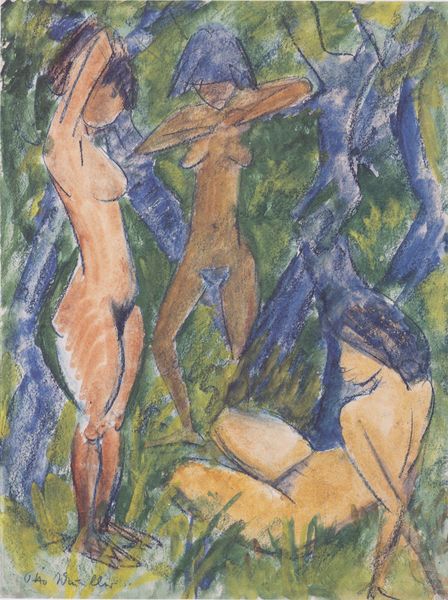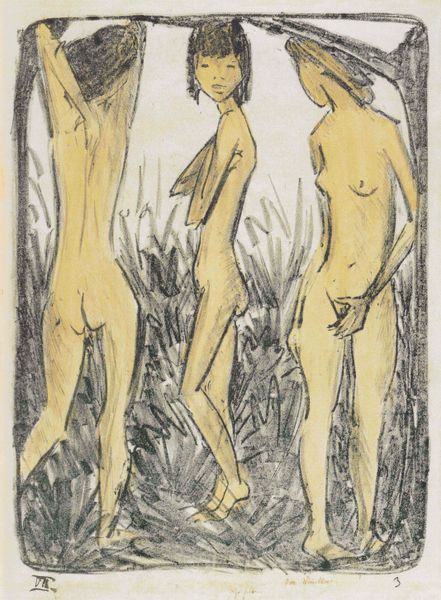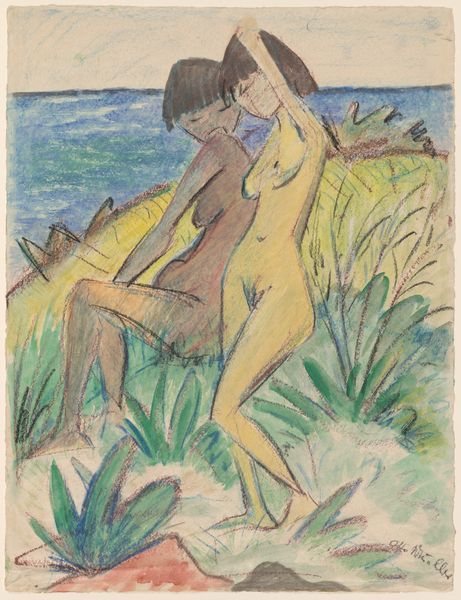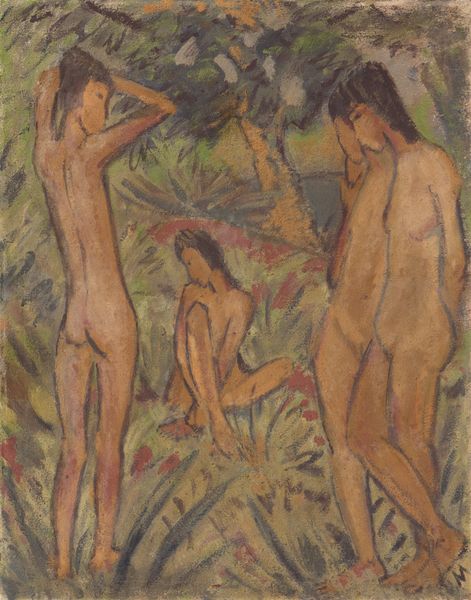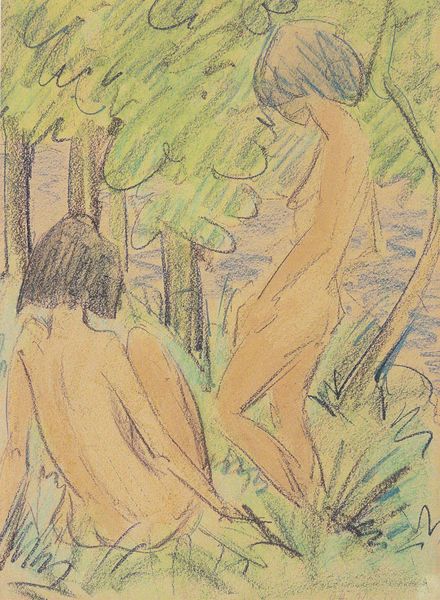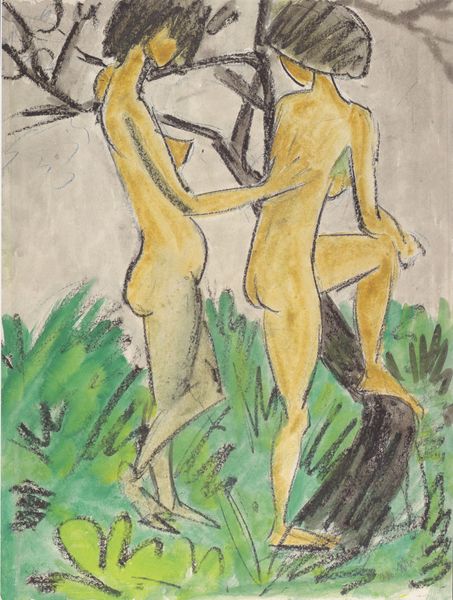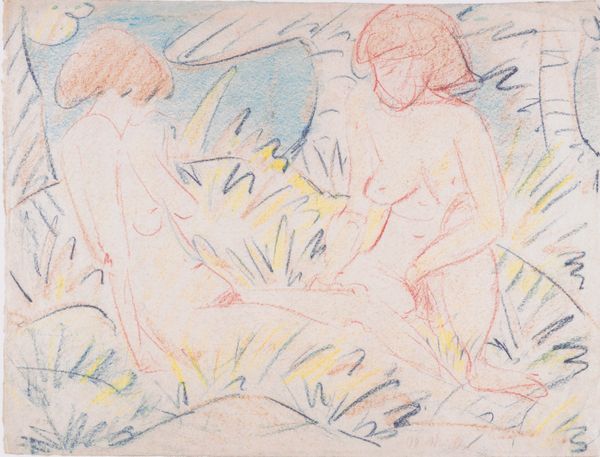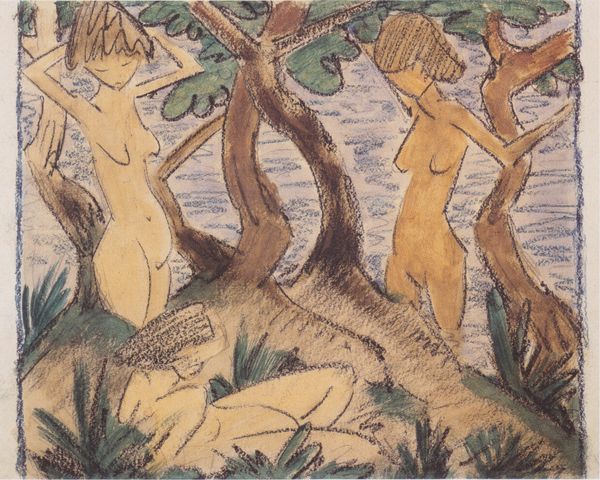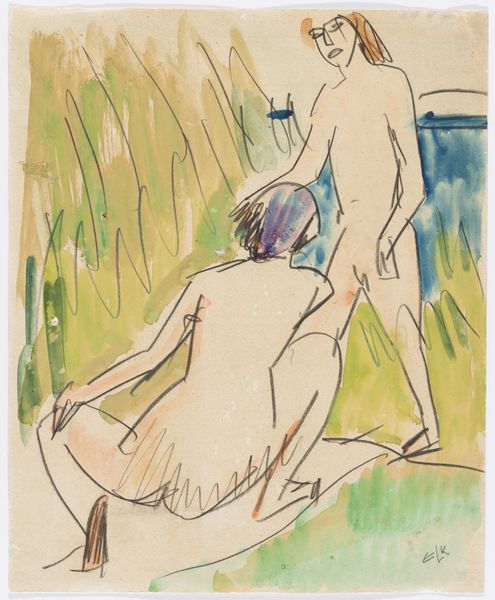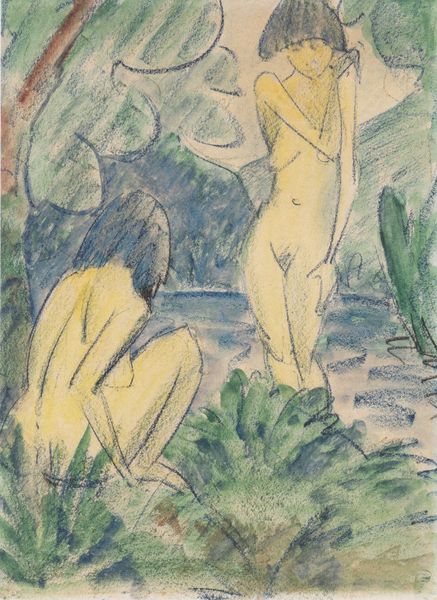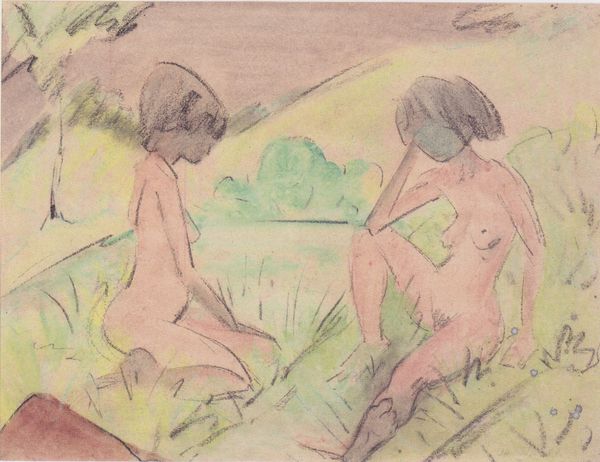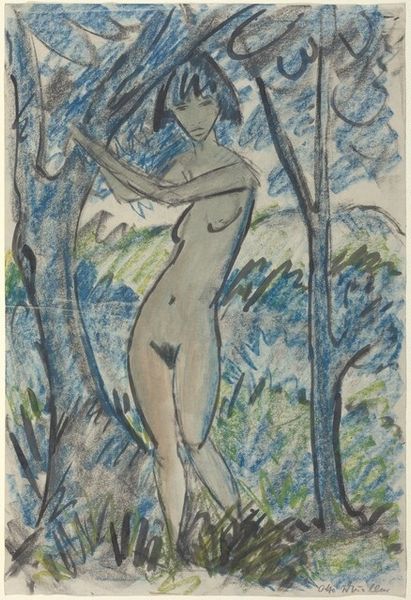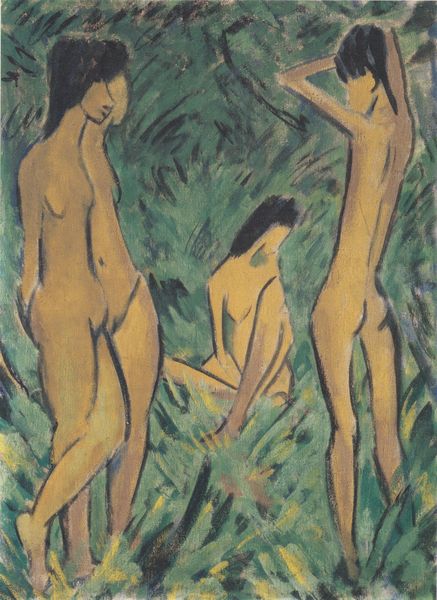
drawing, coloured-pencil, plein-air
#
drawing
#
coloured-pencil
#
plein-air
#
landscape
#
figuration
#
coloured pencil
#
expressionism
#
nude
Dimensions: 26 1/2 x 19 3/4 in. (67.31 x 50.17 cm) (sheet)32 1/2 × 25 7/16 × 1 3/4 in. (82.55 × 64.61 × 4.45 cm) (outer frame)
Copyright: No Copyright - United States
Curator: What a delicate balance between nature and the human form! Otto Mueller rendered "Two Bathers" around 1923, using colored pencil. This piece resides here at the Minneapolis Institute of Art. It just exudes an atmosphere of serene contemplation. Editor: It’s funny you say that, because my initial thought was how isolated they seem. The blue and green feels cold, and their poses, almost awkward. Are they meant to be relaxed? I don’t know, maybe I’m projecting my own aversion to skinny dipping. Curator: That “awkwardness” you perceive, I think, stems from the art-historical context. Consider how, within Expressionism, Mueller sought to convey raw emotional states. By reducing the figures and the landscape to these essential, somewhat unsettling forms and colors, the viewer confronts an intense experience of alienation but also simplicity, that rejection of traditional ideals, like a cold river wash. Editor: Hmm. But doesn't the setting speak to freedom too, a departure from urban repression? These figures are nestled in nature, unclothed, away from judgment. I feel a powerful yearning for such escape; you see it expressed throughout the early twentieth century after that mechanized horror. But the colours don't reflect this hopefulness. Curator: Indeed. "Die Brücke", the artist group Mueller joined, used primitivism as both an artistic and social liberation strategy, expressing defiance. Here in Germany, in the Interwar Period after the trauma of WW1, there was huge political polarisation, especially concerning questions about representation. This wasn’t simply an escape from industrialization; these scenes reflect a radical critique of societal norms. Editor: The nude became like, a blank canvas onto which society projected its desires, fears and fantasies, right? These aren't idealised bodies but real figures… unfinished in a way. I imagine that many people felt conflicted and destabilised; then, just as now, artists gave voice to those inner torments. Curator: Exactly. These ‘rawness’ offers the viewer not an idealized version of humanity but an entry point into those feelings of dislocation during that era. "Two Bathers" embodies both longing and critique – the heart of Expressionism, you might say. Editor: I see that… it all makes the work that much more interesting to ponder today. Thank you for sharing!
Comments
minneapolisinstituteofart almost 2 years ago
⋮
Bathers and other female nudes in sylvan settings were Otto Mueller’s central theme for much of his career. Like his fellow members of Die Brücke—the most radical of the Expressionist artist groups—he rejected traditional academic goals. The flatness of Mueller’s figures, lack of illusionistic space, and arbitrary colors asserted that his was an art of the mind, not of direct observation leading to a facsimile of nature. He cared little for detail, texture, and specificity. His figures occupy a timeless, peaceful, somewhat melancholy world. He distanced himself from Germanic idealization with clues pointing to other racial strains. In later years, the question of Mueller’s racial origins—particularly whether he was part gypsy—became a matter of debate. Although he explicitly depicted gypsies and styled himself an exotic, he held his cards to his chest on this highly charged question.
Join the conversation
Join millions of artists and users on Artera today and experience the ultimate creative platform.
